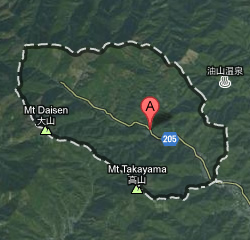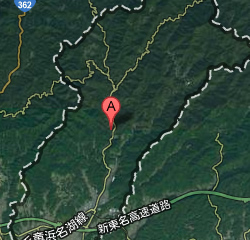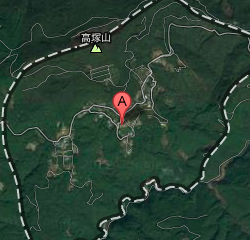Producing Districts of Our Green Tea Collection
From the greatest tea growing districts
In Japan, many of renowned tea fields share a certain important conditions which include:
- Mountainous, hillside region,
- Abundant and clear water,
- Great temperature difference within a day,
- Morning mist or river mist - natural sunshade,
- Mineral-rich soil.
All of our teas come from mountainous regions in Shizuoka prefecture, the mecca of Japanese green tea production. The modern tea industry shifts to larger scale farming in sunny plain districts since it increases the crop yield of tea leaf efficiently and makes it easier to ship first-flush tea quickly. On the other hand, our tea-growers and manufacturers adhere to their land and traditional principles.
We proudly deliver genuine and traditional green tea products from the following districts.
* We are pleased to arrange a visiting tour in these districts for overseas importers, wholesalers and retailers (it usually takes 1 and a half day to visit all 3 districts above). We look forward to introducing you to our partner tea-growers and processing factory specialists!
Hon-Yama area 本山地域
Hon-Yama is a remote, northern area of Aoi ward in Shizuoka city, which belongs to an Abekawa river system. Its foggy climate and hilly topography has made Hon-Yama an ideal place for growing tea plants. Hon-Yama tea (including Ashikubo) is a regular award-winner in green tea contests.
Ashikubo 足久保
Ashikubo is a significant farming district in Hon-Yama valley, where a Buddhist monk Enni (円爾) is said to have introduced tea trees first in Shizuoka. Ashikubo is also known to have produced the highest grade sencha for Tokugawa Shogun as an annual royal gift in 1681.
Located within the Hon-Yama area, Ashikubo has acquired an outstanding reputation as a finest tea production district. They proudly call their teas as "Ashikubo tea" to distinguish them from other Hon-Yama brand teas. Because of some international distributors fascinated by the charms of Ashikubo tea, "Sencha Ashikubo" is increasingly being recognized as a world-wide brand these days.
In Ashikubo, an average temperature difference within a day is 11.5 degrees Celsius, which allows tea leaves to store more amino acids and carbohydrates. Roots of a tea plant grow nearly 2 meters deep in the rocky soil, to absorb rich minerals of Paleozoic stratum. The drying process is usually done on the wood fire, not in an electric dryer. Such environment and conscientious work give Ashikubo tea its characteristic flavor - graceful and refreshing scent, smooth and well-balanced body with steady umami and favorable astringency, and thick and long-lasting aftertaste.

Mori-machi area 森町地域
Mori-machi, the one and only municipality in higher administrative division Shuchi-gun (周智郡 Shuchi district), is located to the northeast of Hamamatsu city. As its name Mori (森 forest) suggests, most of Mori-machi area is covered by mountains and forests. Upper streams of the Ota river have created precipitous hillsides in the area.
Mori-machi 森町
Mori-machi meets all ideal conditions for tea-growing, similar to other famous tea production districts. These conditions include high attitudes, moderate misty climate and rich water resources. You can see many small farms spread around a river valley in Mori-machi.
Blessed with these conditions, though little known outside Shizuoka, it is no wonder that rural Mori-machi is recognized as a high-grade tea growing district in the domestic tea trade. The fact that Mori-machi's teas are long used as an unnamed blend (合組 gougumi) material for other branded teas says a lot about their firm qualities and relatively weak market position.
While Fukamushicha style finishing has become mainstream to meet wholesalers' requests in Mori-machi, some local tea-growers believe that Mori-machi's teas essentially fit traditional, slightly-steamed sturdy finishing. We do agree with them and promote Mori-machi's asamushi (light-steamed) sencha.
Asamushi sencha from Morimachi, rightly brewed in a traditional way, brings bright golden hue blended with a shade of green, pronounced greenish aroma of green tea itself, thick pleasant umami, obvious sweetness and pleasant appeal of astringency, leaving soothing feeling in your throat.
Fukamushicha, on the other hand, shows typical deep-green opaque hue, largely Hika-derived aromatic scent, outstanding sweetness and faint astringency.

Tenryu area 天竜地域
Tenryu ward is situated in the northern area of Hamamatsu city, Shizuoka prefecture. It borders on Mori-machi's western edge, and almost all of the ward is occupied by mountain and forest. Tenryu river valley embraces many tea-growing districts like Harunocho Isagawa, Misakubocho Ohno, Misakubocho Osawa, Sakumacho Okuryoke, Sakumacho Sejiri. Above all MURACO keeps a strong relationship with Harunocho Isagawa.
Harunocho Isagawa 春野町砂川
Harunocho Isagawa is an eastern mountainous part of Tenryu district which locates 400 - 700 meters above sea level. Its climatic condition perfectly matches for traditional tea-growing, and that was exactly the reason they had been underestimated in modern tea market. Short daytime and foggy atmosphere delays the harvest timing and decreases crops of first-flush tea leaves, opposite to typical wholesaler's demand curve (in internal sencha market, the earlier they ship, the more which price goes up).
On the other hand, conscious growers of Harunocho Isagawa succeed in transforming their crops into differentiated, value-added products. Making good use of cool, hence pest damage limiting, environment, they managed to convert all 45 farms in the region into wholly organic, chemical-free tea growers more than 15 years ago. They even organized Marusen Isagawa cooperative tea-manufacturing association to build their own processing factory exclusively for organic teas.
Sencha from Harunocho Isagawa is certified on Japanese Agricultural Standard Organic Foods. JAS-certified organic tea farms which spread over 22 hectares in a single cluster are really unprecedented in Japan.
While typical organic sencha often dissatisfies reviewers because of their ‘insufficient scent’ and ‘umami’, Harunocho Isagawa's sencha absolutely does not. Vivid grassy notes and a slight citrus undertone, thick and fulfilling flavor, and lingering aftertaste all match evenly for another premium districts, including Ashikubo and Mori-machi. They also produce quite rare microbial-fermented organic dark tea.




